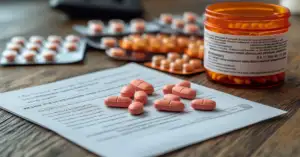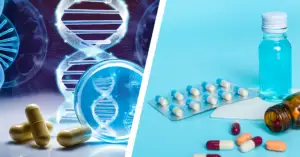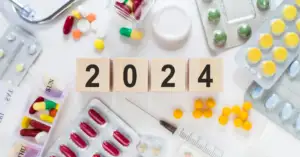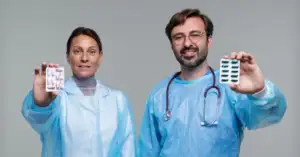Drug safety entails safe use of medicinal products. This concept applies to over-the-counter as well as prescription medicines. It is also applicable for medical therapies indicated for certain disease conditions. The governing principle for drug safety is indicated for making available products that are safe for use by patients and carry minimal risk of causing harm. This encompasses a thorough evaluation of a drug’s benefits and potential risks throughout its lifecycle, from development to market availability. Thus, this involves safety evaluation during the clinical development of the product carried out across the countries via global clinical trials to post-market surveillance programs carried out for therapeutic safety monitoring. Programs alike are termed as pharmacovigilance, and it critically monitors safety of drugs and health of public assuring the use of pharmaceuticals effectively and safely throughout their whole life, covering from developing pharmaceutically to worldwide trials to monitoring post-advertising.
Drug safety encompasses a comprehensive evaluation of the complete safety profile of pharmaceutical products that involves their development, approval, manufacturing, distribution, and utilization. This involves identifying, evaluating and mitigating the risks associated with a drug’s usage to ensure its benefits exceed potential harms. Activities related to drug safety include investigating risks during the preclinical drug development program and mitigating potential risks during the clinical development carried out with extensive global clinical trials. Risk assessment, its evaluation, mitigation strategies and its effectiveness are reviewed by the regulators before granting the marketing authorization. The regulatory framework and approval procedures require continuous post-market surveillance, adverse event reporting, causality assessment with implementing risk minimization strategies, and continuous monitoring of drugs on the market. The focus is on the entire lifespan of a drug, from its early development stages to its availability and patient use. All through the lifespan of a drug, nonstop checking and aftereffects and adverse event’s assessment is critical. For guaranteeing the usage of medications unharmed, a strong bond is formed between the bodies controlling all the regulations, medicine companies, caregivers, and pool of patients. The manufacturers of pharmaceuticals keep the safety of drugs on priority by testing thoroughly and sticking to tough standards of regulations, thus safeguarding the welfare of patients.
The maintenance and assurance of safety of a drug has many specific advantages as outlined below:
- Protecting Patients:
- Minimalize Harm: The measures of safety of a drug have the sole advantage of reducing harm to the patients. The pool of patients has a reduced probability of encountering side effects or adverse reactions by the identification and mitigation of possible dangers related to the drug.
- Improve Trust of Patients: It is easy to gain the trust of patients by keeping them informed by providers of healthcare that the standards of safety are rigorous, and this will also instill faith in the medicines given to them.
- Public Health:
- Healthy Populations: Safe drugs contribute to the overall health of the population, allowing individuals to manage and treat illnesses effectively without additional health risks.
- Healthcare System:
- Reduced Healthcare Costs: Adverse drug reactions and complications often lead to additional healthcare costs. Additional burden is lessened on the system of healthcare by guaranteeing the safety of a drug.
- Effective Treatment: The providers of healthcare can conduct better plans of treatment by prescribing efficient and safe drugs.
- Industry and Innovation:
- Enhanced Research: Drug safety studies often lead to a better understanding of a drug’s mechanisms and potential side effects, contributing to further research and development.
- Confidence in the Marketplace: A sense of confidence is fostered in the field of pharmaceuticals due to the safety of a drug thus nurturing financing and novelty.
- Compliance with Regulations:
- Adhering to Regulations: Pharma bodies escape from any legal allegations and retain agreement with the regulating bodies by complying with rules and regulations pertaining to the safety of a drug.
- Quality Management: Protocols pertaining to the safety of a drug make certain that pharma bodies sustain standards of best quality in production, storing, and supply.
- Ethical Considerations:
- Ethical Accountability: Professionals of healthcare and pharma bodies maintain the well-being of a patient as a top priority by certifying that the safety of a drug allies with ethical accountability.
- Informed Decisions: Informed decisions can be made by a patient regarding their well-being when they have the accessibility to all the details pertaining to the profile of the safety of a drug.
- Long-Term Examining:
- Long-Time Examining: The events of the safety of a drug comprises of long-term examining of medicines post marketing, for the allowance of any rare or prolonged adverse reactions discovery.
- Preparation of Emergency:
- Being Ready for any Emergency: A strong body of drug safety trains bodies of healthcare for any emergency, confirming that any safe medicine is available during any emergency.
In inference, confirming the safety of a drug is of prime importance for maintaining an individual’s well-being and maintaining the reliability of public systems of health. A pharmaceutical is manufactured by testing rigorously and by examining adverse reactions. By giving precedence to measures of safety, risks can be alleviated, outcomes of a patient can be enhanced, and trust can be endorsed in the system of healthcare.





